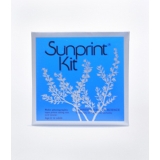
First introduced in the late 70’s at the Lawrence Hall of Science Berkeley Sunprint paper allows you to take “solar Photographs” by laying things on top of the paper and then exposing it to the sun. When you have finished exposing the image you want you dip it in water and the picture stays. You can get it just about anyplace, but here are a few links. I think what I like best about this process is that the pictures have that haunting blue color to them that for some reason makes it feel “old fashioned.” It’s also a good way to teach students about solar energy.
With the right kind of eye the effects can be pretty interesting. (more pictures after the fold)
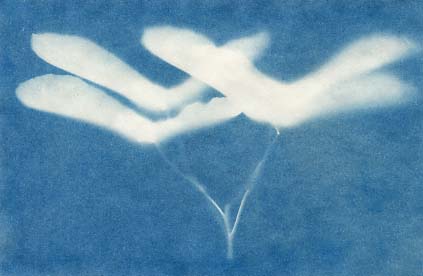
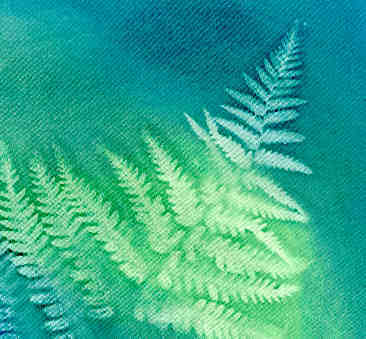
(I belive this effect may be produced with a paint version of the emulsion on the paper, that has been applied to fabric)
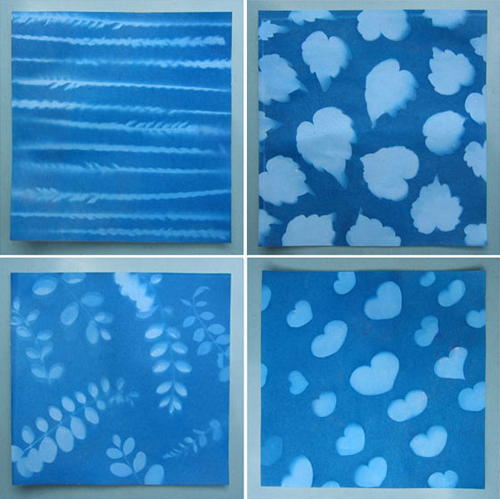
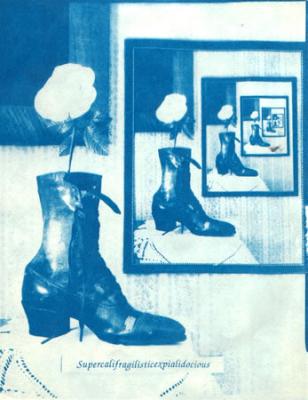
(more in a gallery here)
Edit: a nice wikipedia article that has some background on the science of how this works. Thanks Philip.
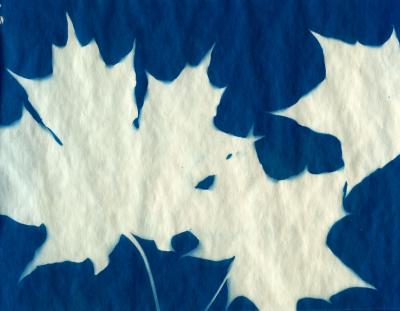
This is actually a cyanotype (or a related process), one of the earliest photographic processes.
I’ve taught the cyanotype process before, even to middle school kids. It’s relatively safe (it uses a couple of iron compounds as the sensitizer), particularly if the instructor coats the paper for the class beforehand. Developing the image after exposing it to the sun is done in running water.
The sensitizer can be brushed onto fabric as well as paper. Most any absorbent material could be coated and dried and then exposed to make a print.
Philip: thank you very much for that very interesting link and information.
Very curious, but why is the color blue????
best: that is the color of the chemical used in this process.